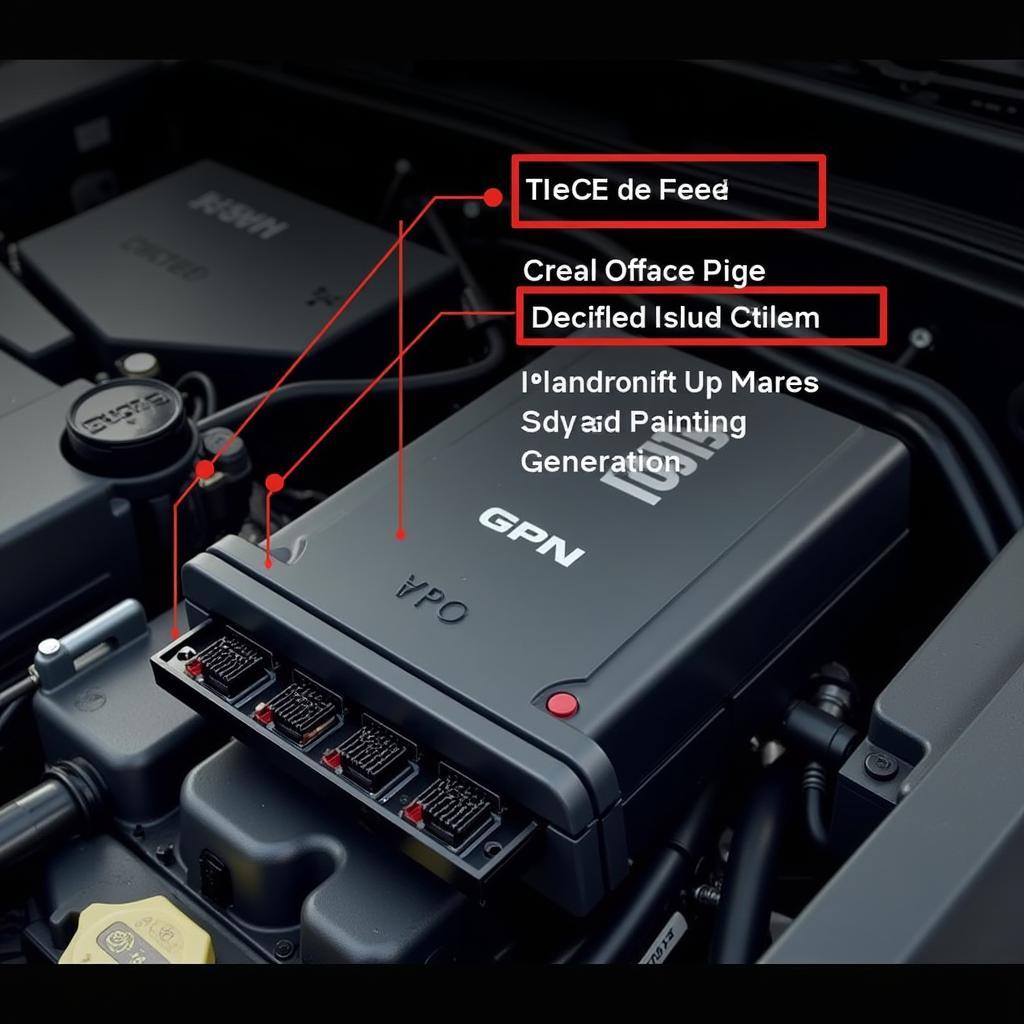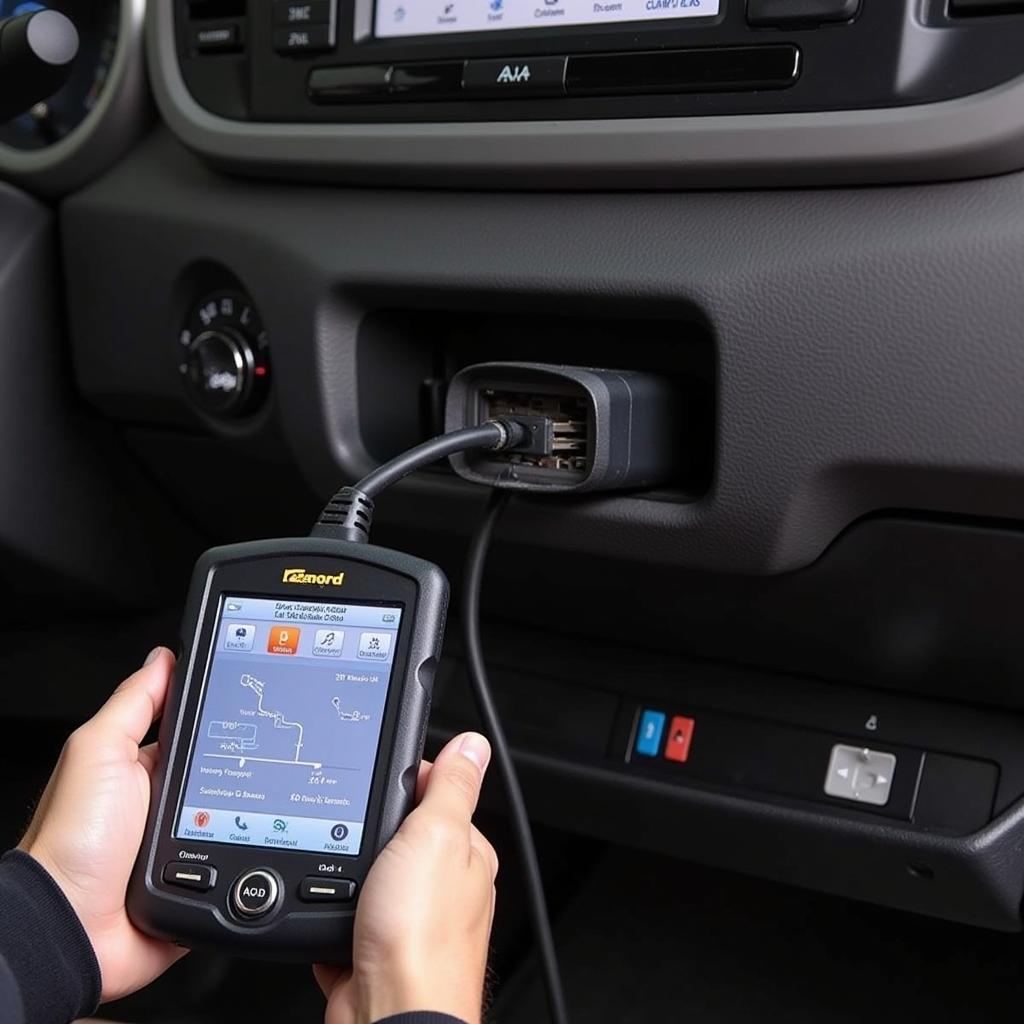Can you clear car codes without a scan tool? It’s a common question among car owners facing that dreaded check engine light. While a scan tool is the most reliable method, there are alternative approaches you might consider. This article will explore various ways to potentially clear car codes, discuss their effectiveness, and highlight why a proper diagnostic tool remains the best solution.  Clearing Car Codes Without a Scan Tool
Clearing Car Codes Without a Scan Tool
Understanding Car Diagnostic Trouble Codes (DTCs)
Before we dive into the “how,” let’s understand the “what.” Diagnostic Trouble Codes, or DTCs, are alphanumeric codes that your car’s onboard computer (ECU) generates when it detects a malfunction within a system. These codes are crucial for pinpointing the root cause of automotive issues. car diagnosing tools can help you decipher these codes accurately.
Why Clearing Codes Isn’t Always the Solution
While clearing the codes might temporarily extinguish the check engine light, it doesn’t address the underlying problem. Think of it like silencing a fire alarm without extinguishing the fire. The alarm might be quiet, but the danger persists. Similarly, clearing codes without fixing the issue can lead to further damage and more expensive repairs down the line.
Methods to Potentially Clear Car Codes Without a Scan Tool
Several methods are touted as ways to clear car codes without a scan tool. Let’s explore some of the most common ones:
- The Battery Disconnect Method: This involves disconnecting the car’s battery terminals for a period, typically ranging from 15 minutes to an hour. The idea is to reset the ECU and clear the stored codes. While this might work in some cases, especially for minor glitches, it’s not guaranteed. Moreover, it can also reset other vehicle settings, such as radio presets and clock.
- The Fuse Removal Method: Similar to the battery disconnect method, removing the ECU fuse can sometimes clear codes. However, identifying the correct fuse can be tricky and requires consulting the car’s owner’s manual. can obd-ii car scanner tool for check engine light offers a more reliable and less disruptive alternative.
- Driving for a Certain Period: Some believe that driving for a specific distance or number of drive cycles can clear the codes if the issue is intermittent. However, this is unreliable and can prolong the problem if a genuine fault exists.
 Car ECU and Diagnostic Trouble Codes
Car ECU and Diagnostic Trouble Codes
Why a Scan Tool is the Best Approach
While the methods mentioned above might temporarily clear codes, they don’t offer the diagnostic capabilities of a scan tool. diagnosis tool for car provide detailed information about the fault codes, allowing for accurate diagnosis and repair.
“Using a proper diagnostic tool is like having an X-ray vision into your car’s systems,” says automotive expert, Michael Stevenson. “It allows you to pinpoint the exact issue and avoid unnecessary guesswork and potentially costly mistakes.”
Benefits of Using a Scan Tool
- Accurate Diagnosis: Scan tools provide specific DTCs and their descriptions, leading to a precise diagnosis of the problem.
- Live Data Streaming: Many scan tools offer live data streaming, allowing you to monitor various sensor readings in real-time. This feature is invaluable for troubleshooting complex issues.
- Enhanced Functionality: Some advanced scan tools can perform functions like bi-directional control, allowing you to test components and systems directly.
Conclusion
Can you clear car codes without a scan tool? Possibly. However, relying solely on these methods can be risky and might only mask the underlying problem. Using a obdii car computer diagnostic scan tool is the most reliable and effective way to diagnose and address car trouble codes. It empowers you to understand the root cause of the issue and ensures proper repairs, saving you time and money in the long run.  Mechanic Using a Diagnostic Scan Tool
Mechanic Using a Diagnostic Scan Tool
FAQ
- What does a flashing check engine light indicate? A flashing check engine light usually signals a severe problem that requires immediate attention.
- Will disconnecting the battery reset all car settings? Disconnecting the battery can reset various settings, including radio presets, clock, and sometimes learned driving habits.
- How often should I check my car’s diagnostic codes? It’s a good practice to check for codes periodically, especially if you notice any unusual performance issues.
- Are all car diagnostic codes serious? No, some codes indicate minor issues, while others signal more significant problems.
- Can I use a generic OBD-II scanner on any car? Generic OBD-II scanners should work on most cars manufactured after 1996 in the US.
- What is the difference between OBD-I and OBD-II? OBD-II is a standardized system used in most modern vehicles, while OBD-I varied significantly between manufacturers.
- Can I fix my car based solely on the diagnostic code? While the code helps identify the problem area, further investigation is often needed to pinpoint the exact fault.
“Investing in a reliable car diagnostic tool is an investment in your vehicle’s health and your peace of mind,” advises Sarah Chen, a certified automotive technician. “It gives you the power to understand and address issues promptly, preventing minor problems from escalating into major headaches.”
For further information on car diagnostic tools, check out our car diagnostic tool definition. You may also find useful information on our other articles related to car diagnostics. For any support or inquiries, don’t hesitate to contact us via WhatsApp: +1(641)206-8880, Email: [email protected], or visit us at 910 Cedar Lane, Chicago, IL 60605, USA. Our customer support team is available 24/7.

Leave a Reply